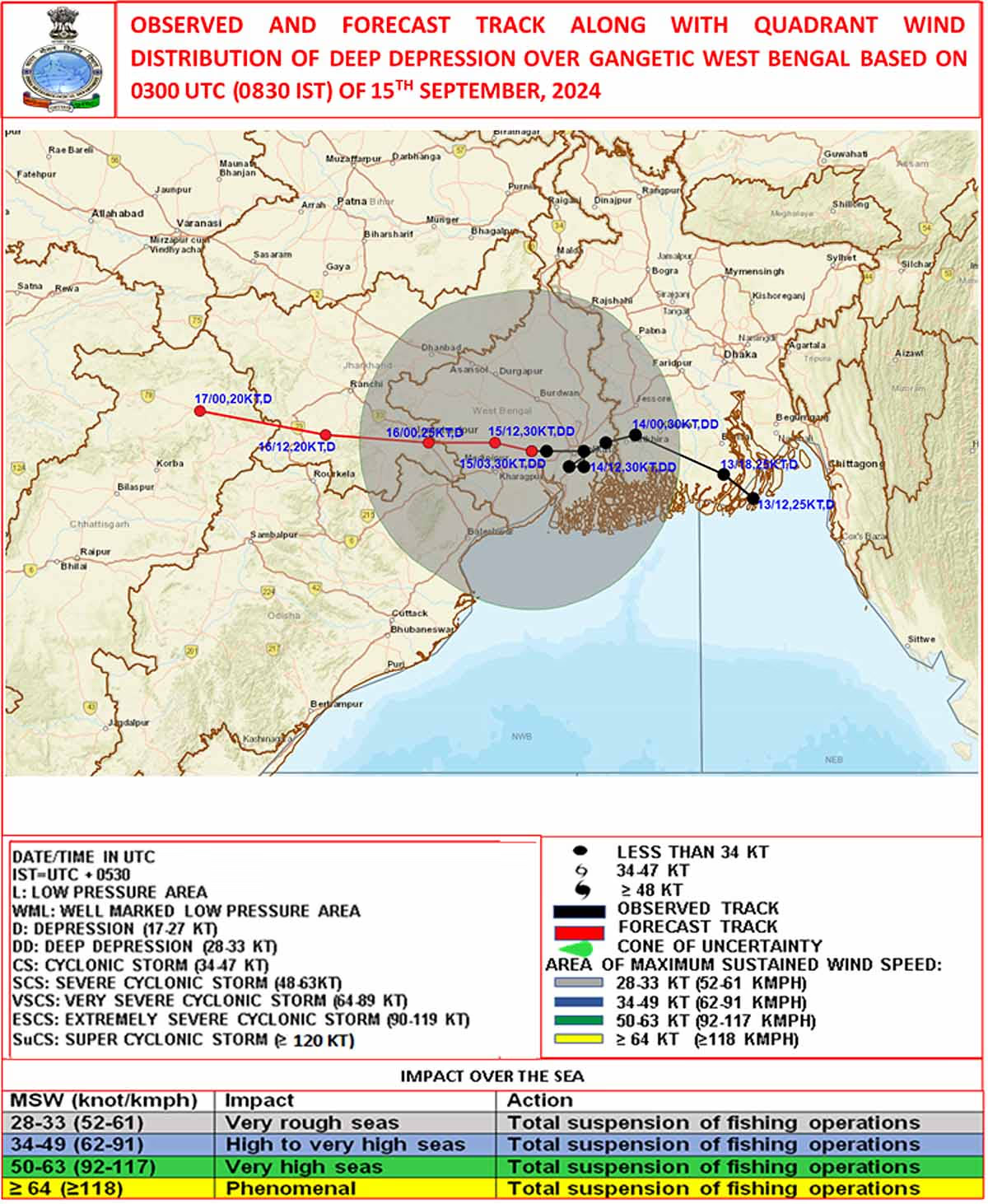A deep depression has formed in the Bay of Bengal, creating a swirling weather system moving forward. This could result in heavy rains and flood-like conditions. Currently, it’s located 60 kilometers west of Kolkata, 170 kilometers east of Jamshedpur, and 270 kilometers east-southeast of Ranchi.
It will gradually move westward at a rate of about 8 km/hr. Due to this, heavy to very heavy rain is expected in Bankura, Purulia, and West Medinipur. Winds at sea could reach speeds of 70 km/hr. Meteorologists believe the storm may move towards Delhi, passing through Uttar Pradesh and Bihar. However, it is also being said that this deep depression will weaken into a depression within the next 48 hours.
Read Also: 30% More Rainfall, 22 Days of Extreme Rain... This August Has Been Stormy for People

Source: aajtak
According to the weather department, heavy rains are expected in different parts of Uttarakhand, Chhattisgarh, Bihar, Arunachal Pradesh, Assam and Meghalaya, Nagaland, Manipur, Mizoram, and Tripura, with more than 70 mm of rain.
Impact on These States for the Coming Days
Uttarakhand, western Madhya Pradesh, Chhattisgarh, Bihar, Jharkhand, Odisha, sub-Himalayan West Bengal, and Sikkim are expected to experience stormy winds, rain, and lightning. Similarly, Arunachal Pradesh, Assam, Meghalaya, Nagaland, Manipur, Mizoram, Tripura, Tamil Nadu, Puducherry, and Karaikal are also expected to see thunderstorms and lightning.
Read Also: The Rain Isn't Over Yet... One Depression Flooded Gujarat, Another Hit Andhra-Telangana, Next Week Brings New Trouble
During the monsoon, the formation of low-pressure systems is common. Known as monsoon lows, these systems often intensify into monsoon depressions and can persist for a long time.

Source: aajtak
Unorganized Urban Development Leads to Land-Based Cyclones
Scientists attribute urban flooding during such weather to unplanned urban development. Poor stormwater management, imbalanced green cover, and inadequate rainwater harvesting exacerbate the situation. This new issue is termed Land-Based Cyclone.
Worsening Conditions In the Coming Years
From 1982-2014 compared to 2071-2100, India will see an 18 percent increase in extreme rainfall if the current CO2 emissions continue. If emissions rise, there will be a 58 percent increase in heavy rainfall intensity. According to an Indian Institute of Tropical Meteorology (IITM) study, this century end could see significant increases in extreme rainfall events across India.
Read Also: The End of Drought... Our Scientists Will Make It Rain Anywhere in the Country; Know the 5-Year Plan

Source: aajtak
The western ghats and central India will be most affected. Increased CO2 emissions are responsible for such weather. The study also indicates heightened risks for India's eastern coastal areas and the Himalayan foothills. Currently, 8 percent of India experiences extreme rainfall, which will significantly increase in the future.
Increase in Days with Heavy Rainfall
Long-term extreme rainfall events will increase two-fold. Unlike short-term rainfall, such events can last for three to six days, increasing the risk of loss of life and property. Scientist Jasti S. Chowdary, who conducted the study, stated that the number of extremely rainy days could rise from the current four to nine per year by the century's end. Monsoon rainfall is expected to increase by 6 to 21 percent.




